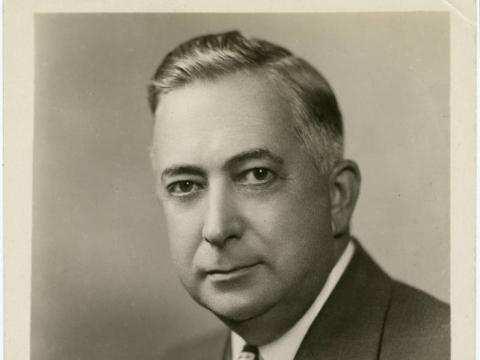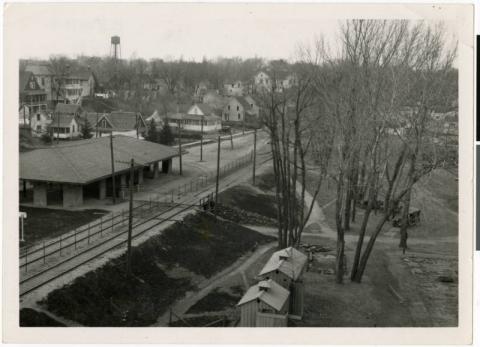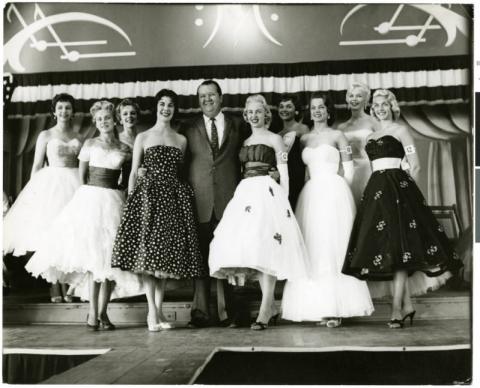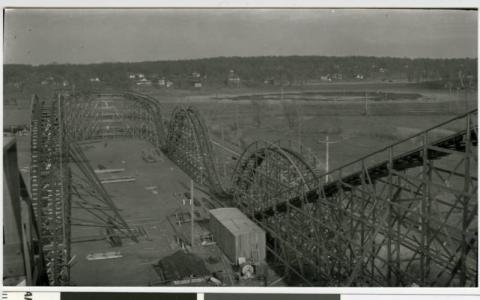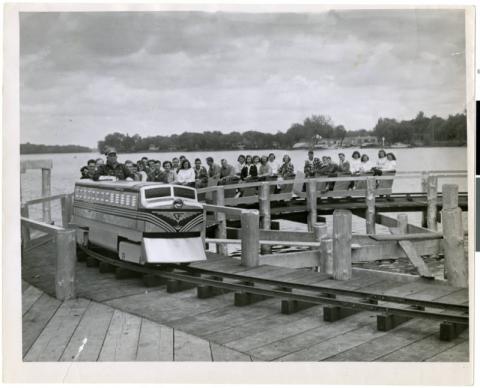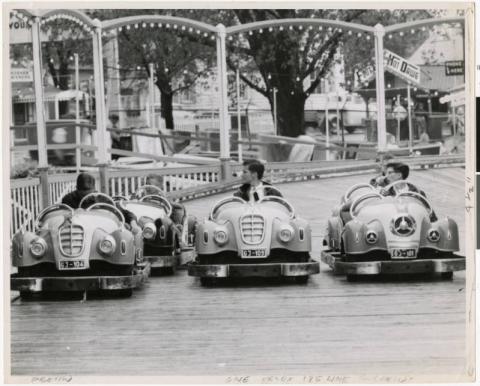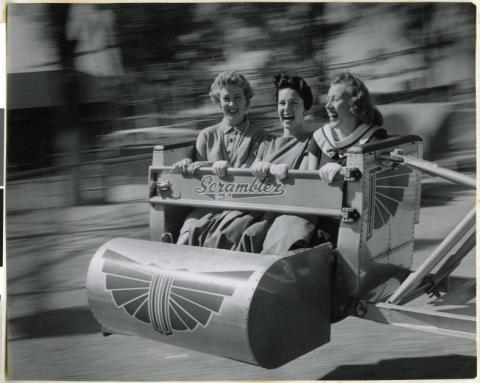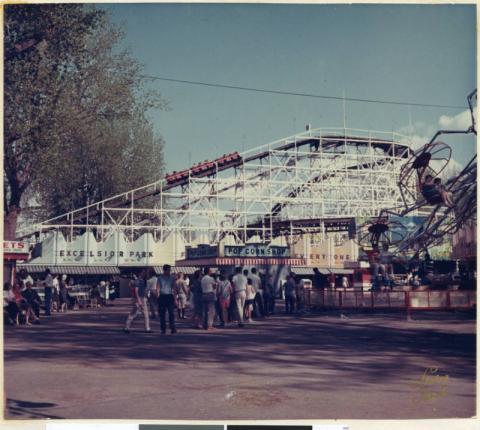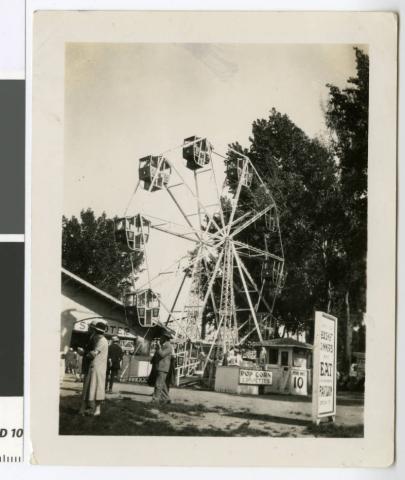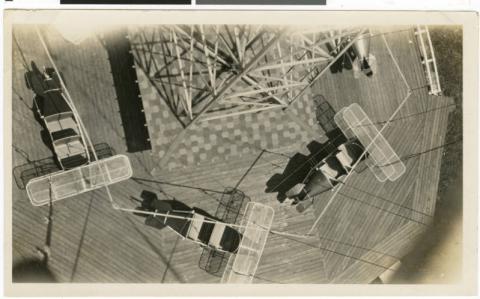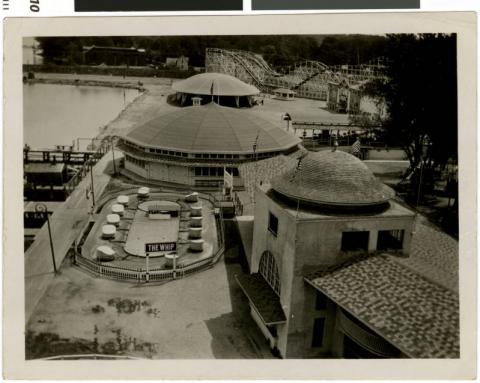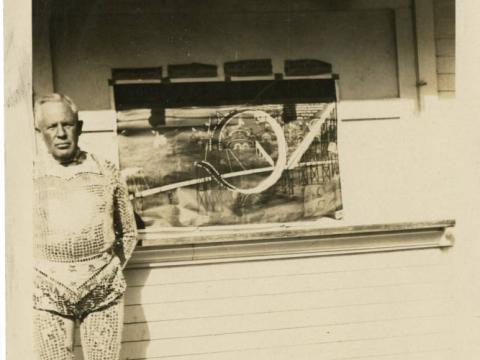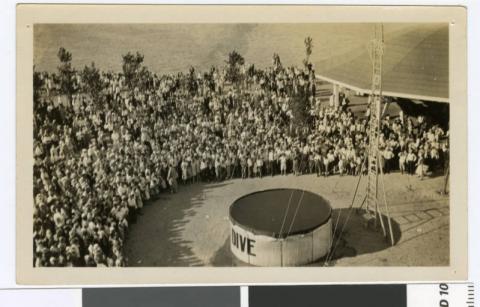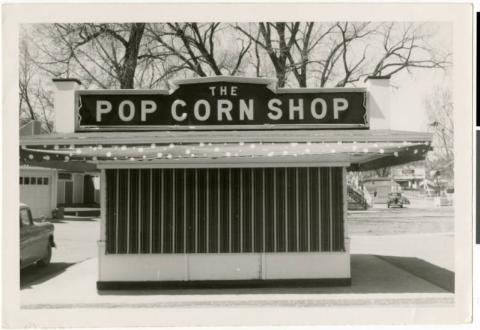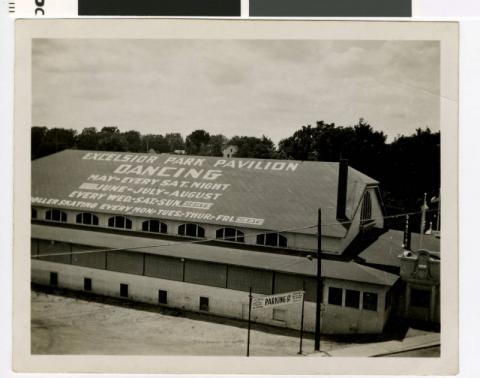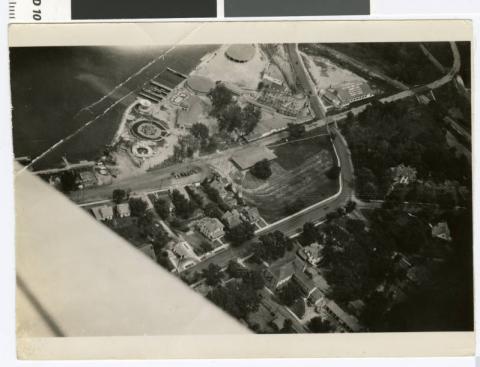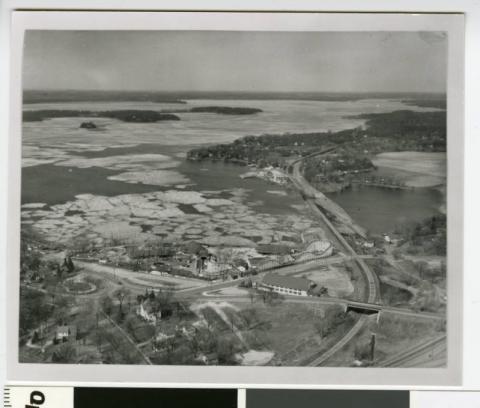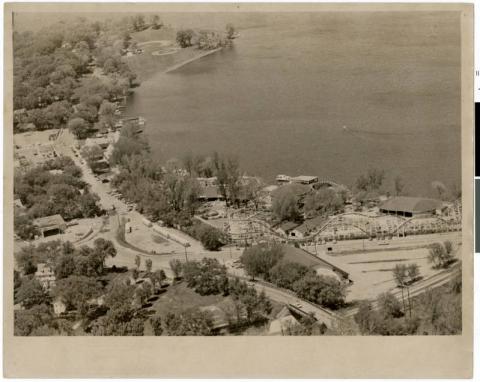Primary Source Set
by Jennifer Claybourne, Digital Projects Assistant, University of Minnesota
Amusement parks are a mainstay of family entertainment and have been for many years. The first known amusement park was in Denmark in 1583, but it was not until the 1800s that amusement parks became part of the shared American experience. The first amusement parks to open in the United States were Lake Compounce Amusement Park in Bristol, CT (1846) and Cedar Point in Sandusky, OH (1870). Both still operate today. One of the most iconic names associated with amusement parks in the United States is Coney Island, referenced in numerous books, plays and movies.
For many years Minnesota’s equivalent to Coney Island was the Excelsior Amusement Park, located on the west end of the Twin Cities metro area. While neither the first nor the last amusement park in the Minneapolis/St. Paul area of Minnesota, Excelsior Amusement Park had a run that lasted 49 years. Over the years, The Park catered to families by offering ease of access via public transit, exciting rides for kids of all ages, picnic areas for family gatherings, and entertainment acts that captivated everyone’s attention.
Fred W. Pearce built, owned and operated the new park when it opened in 1925. He was part of the movement to expand the amusement park concept westward after the success out east. The local streetcar company, Twin Cities Rapid Transit Company (TCRT) leased 1600 feet of lakefront, including 10 acres of swampland, to Fred Pearce on a 20-year lease. Fred Pearce as owner of the Excelsior Park Company purchased the land outright in the 1930s, but the rail line would continue to operate as one of the main modes of transportation for the park.
The Park opened on May 30, 1925 with 20,000 visitors and operated Memorial Day through Labor Day. The first rides at the park included:
- A Roller Coaster
- Custer Cars (hot rod looking cars that could be driven around a track)
- Carousel from the Philadelphia Toboggan Company
- Aerial Swings
- The Caterpillar
- Ferris Wheel with closed cabs rather than open swings that made it safer for younger kids;
- A mini Railway
- Skooters (Bumper Cars)
In the 1930s, the park started offering special free attractions to entice families to return and enjoy the park even though money might be tight. Entertainment acts included:
- Captain Jack Payne - a local high diver
- Oscar Babcock - acrobat and bicyclist
- Prince Nelson - the “Wizard of the Wire”
- Al Blackstone’s “Flying Circus”
- Smith’s Diving Ponies
Peak use and attendance came during the 1940s and 1950s. Despite losing many men as employees during the war years, the park stayed active and profitable. Beginning in 1943, Excelsior Park hosted a number of beauty pageants, including the state contests for the Miss America and later the Miss USA pageants.
In the 1970s several elements converged to force the closure of the park. It could not expand in the area to include more rides or parking and rising taxes and land values made the area land prime real estate for bigger revenues.The Park’s final season ended on September 16, 1973.
The Excelsior Amusement Park is one of legend and legacy for Minnesota families. People still remember the impact the Excelsior Amusement Park had on their families and childhood. Excelsior also established Minnesotans love of amusement parks as witnessed by the number of attractions still in operation today.
Discussion Questions & Activities
- Look at how many photographs have the Roller Coaster ride in them. The roller coaster at Excelsior was a half mile in track length and reached a height of 65 feet. Do you think it deserved the nickname “King of the Midway”? Do you think Roller Coasters are still big attractions at today’s Amusement Parks? Would this one seem thrilling or scary to you today? Why or why not?
- Look at the aerial photographs from 1925, 1943, and the photograph dated 1960-1970. One of the reasons given for the Park’s closing in 1973 was limited space and no place to expand. What are the biggest changes you notice over the years? Do you agree or disagree with the reason of limited space to expand?
- Excelsior Amusement Park was a “Free Gate” park vs. a “Pay Gate”, which meant that there was no admission fee to get into the park. People pay per ride and for any food from the concession stands. Entertainment acts were usually free. A “Pay Gate” has a fee at the gate but then the rides and entertainment are all free. Food, however, is usually still an extra cost. Why do you think Excelsior was a “Free Gate” park? Can you think of any parks today that are “Free Gate” vs “Pay Gate” parks? Which do you think is better for the parks and the visitors? Why?
- The Twin Cities Rapid Transit Company (TCRT) was looking for a way to get more economic benefit from their rails. Entertainment destinations at the end of lines were a popular idea. How did these “destinations” help the railway companies? Can you name at least one end of the line destination for the light rail train system in the Twin Cities today?
- The Excelsior Amusement Park survived the Great Depression and remained open to visitors. What do you think contributed to their continued success despite general economic hard times of the 1930s?
- What do you think happened to all the rides after the park closed? What would you have done?
- Research the other amusement parks that have operated or are still operating in the Minneapolis/St. Paul area. Pick a park and try to find more information about it to share with the class.
- Research roller coasters. How have they changed since the early 1900s? How have the stayed the same? Design your own roller coaster.
- Design an amusement park. If you were going to build an amusement park today, what would you include? What would you skip? Where would you put it?
- Think about the rides and the shows you might have seen on a typical day at the Park. Think about what you would have done if you had visited the park in the 1940s or 1950s. Write a diary entry or a letter to a friend about your day at the Excelsior Amusement Park.
eLibrary Minnesota Resources (for Minnesota residents)
"Amusement Parks." Gale Encyclopedia of U.S. Economic History, edited by Thomas Riggs, 2nd ed., vol. 1, Gale, 2015, pp. 71-73. Gale In Context: High School. Accessed 6 Oct. 2025.
"Coney Island." Britannica School, Encyclopædia Britannica, 24 Oct. 2008. Accessed 7 Feb. 2018.
Kelley, S. Allyn. “Old Fashioned FUN.” Boys' Quest, vol. 15, no. 1, June 2009, p. 34. Middle Search Plus, EBSCOhost, Accessed 7 Feb. 2018.
Pearson, Erica. “Why Did the Excelsior Amusement Park on Lake Minnetonka Close?” Star Tribune (Minneapolis, MN), 24 Jan. 2025. Accessed 6 Oct. 2025.
"Roller coaster." Britannica School, Encyclopædia Britannica, 26 Nov. 2014. Accessed 7 Feb. 2018.
Additional Resources for Research
“After 49 Years, Excelsior Park Forced to Close” Austin Daily Herald, 3 Mar. 1973.
“AMUSEMENT PARKS.” St Louis Park Historical Society, slphistory.org/amusementparks/
“Arson Suspected Excelsior Fire” Albert Lea Tribune, 9 July 1973.
“Coney Island.” Wikipedia, Wikimedia Foundation, 11 Mar. 2018, en.wikipedia.org/wiki/Coney_Island.
"Excelsior Amusement Park." Wikipedia, Wikimedia Foundation, 9 Sept. 2025, https://en.wikipedia.org/wiki/Excelsior_Amusement_Park. Accessed 6 Oct. 2025.
“A History of Lake Minnetonka.” Lake Minnetonka Historical Society, https://www.lakeminnetonkahistory.org/areahistory.html. Accessed 6 Oct. 2025.
“Plan.” Luna Park in Coney Island, lunaparknyc.com/plan/.
Van Gompel, Greg. Excelsior Amusement Park: playland of the Twin Cities. The History Press, 2017.
Published onLast Updated on
